Wassily Kandinsky
Wassily Kandinsky Encyclopædia
Britannica | article page
b. Dec. 4 [Dec. 16, New
Style], 1866, Moscow, Russia
d. Dec. 13, 1944, Neuilly-sur-Seine, Fr.
 Russian IN FULL
VASILY VASILYEVICH KANDINSKY, Russian-born
artist, one of the first creators of pure
abstraction in modern painting. After successful
avant-garde exhibitions, he founded the
influential Munich group Der Blaue Reiter
("The Blue Rider"; 1911-14) and began
completely abstract painting. His forms evolved
from fluid and organic to geometric and, finally,
to pictographic (e.g., "Tempered
Élan," 1944). Russian IN FULL
VASILY VASILYEVICH KANDINSKY, Russian-born
artist, one of the first creators of pure
abstraction in modern painting. After successful
avant-garde exhibitions, he founded the
influential Munich group Der Blaue Reiter
("The Blue Rider"; 1911-14) and began
completely abstract painting. His forms evolved
from fluid and organic to geometric and, finally,
to pictographic (e.g., "Tempered
Élan," 1944).
http://www.britannica.com/bcom/eb/article/2/0,5716,45572+1,00.html
The Life an Works of Wassily Kandinsky
 Kandinsky
was born in Moscow on Dec. 4, 1866. He studied
law and political economy at the University of
Moscow, but after a visit in 1895 to an
exhibition of French impressionist paintings in
Moscow, Kandinsky decided to become a painter.
Moving to Munich, Germany, he worked under Anton
Azbé and Franz von Stuck, studying impressionist
color and art nouveau (an ornamental style of
about 1890 to 1910). From the very beginning
Kandinsky's own work showed an interest in
fantasy. Kandinsky
was born in Moscow on Dec. 4, 1866. He studied
law and political economy at the University of
Moscow, but after a visit in 1895 to an
exhibition of French impressionist paintings in
Moscow, Kandinsky decided to become a painter.
Moving to Munich, Germany, he worked under Anton
Azbé and Franz von Stuck, studying impressionist
color and art nouveau (an ornamental style of
about 1890 to 1910). From the very beginning
Kandinsky's own work showed an interest in
fantasy.
http://www.astaroth.netmegs.com/Art/Kandinsky/kandinsky.html
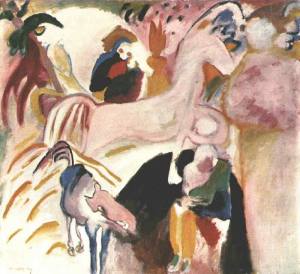 Wassily Kandinsky: Works Viewable on the
Internet Wassily Kandinsky: Works Viewable on the
Internet
Eine sehr umfangreiche Linksammlung
zu den Online-Werken von Wassily Kandinsky in
Museen, Gallerien, Bildarchiven und anderen
Websites.
http://www.artcyclopedia.com/artists/kandinsky_wassily.html
 WebMuseum: Kandinsky, Wassily WebMuseum: Kandinsky, Wassily
Steven Brock - stbrock@panix.com
Kandinsky, himself an accomplished
musician, once said ``Color is the keyboard, the
eyes are the harmonies, the soul is the piano
with many strings. The artist is the hand that
plays, touching one key or another, to cause
vibrations in the soul.'' The concept that color
and musical harmony are linked has a long
history, intriguing scientists such as Sir Isaac
Newton. Kandinsky used color in a highly
theoretical way associating tone with timbre (the
sound's character), hue with pitch, and
saturation with the volume of sound. He even
claimed that when he saw color he heard music.
http://www.oir.ucf.edu/wm/paint/auth/kandinsky/
 M o d e r n P a i n t e r s - Wassily
Kandinsky M o d e r n P a i n t e r s - Wassily
Kandinsky
Jamie McKendrick
Kandinsky's synaesthetic experience
of 'the colour of music', and his exploration of
pictorial harmony and discord, may be as
important as 'the spiritual' in the story of his
pioneering abstractionism.
http://www.modernpainters.co.uk/mp_site/article/article.php3?article_id=1476&nav_id=2&article1=1476&article2=1472&article3=1484
Wassily Kandinsky
- ART MASTERPIECES

66 Masterpieces of Wassily
Kandinsky.
http://www.spectrumvoice.com/art/artists/major/k/kandinsky.htm
Kandinsky: Compositions
Mark Harden
 Wassily
Kandinsky was one of the most original and
influential artists of the twentieth-century. His
"inner necessity" to express his
emotional perceptions led to the development of
an abstract style of painting that was based on
the non-representational properties of color and
form. Kandinsky's compositions were the
culmination of his efforts to create a "pure
painting" that would provide the same
emotional power as a musical composition. The
exhibition "Kandinsky: Wassily
Kandinsky was one of the most original and
influential artists of the twentieth-century. His
"inner necessity" to express his
emotional perceptions led to the development of
an abstract style of painting that was based on
the non-representational properties of color and
form. Kandinsky's compositions were the
culmination of his efforts to create a "pure
painting" that would provide the same
emotional power as a musical composition. The
exhibition "Kandinsky:  Compositions",
organized by Magdalena Dabrowski and on display
at the Los Angeles County Art Museum until
September 3, 1995, presents these monumental
works together for the first and possibly last
time and provides an opportunity to witness the
creative process of Kandinsky. Compositions",
organized by Magdalena Dabrowski and on display
at the Los Angeles County Art Museum until
September 3, 1995, presents these monumental
works together for the first and possibly last
time and provides an opportunity to witness the
creative process of Kandinsky.
http://glyphs.com/art/kandinsky/
Kandinsky
 "That
which belongs to the spirit of the future can
only be realized in feeling, and to this feeling
the talent of the artist is the only road. "That
which belongs to the spirit of the future can
only be realized in feeling, and to this feeling
the talent of the artist is the only road.
Theory is the lamp which sheds light on the
petrified ideas of yesterday and of the more
distant past."
(W. Kandinsky)
http://www.netspace.org/~julia/art_page/artists/kandinsky/kandinsky.html
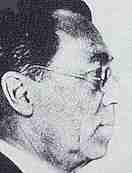 Homage To Wassily Kandinsky Homage To Wassily Kandinsky
Harry Hilson
Wassily Kandinsky was a Russian born
artist. A painter who lived through the Russian
Revolution and World War's One and Two. He was
born in 1866 and died in Paris during 1944. As a
young artist Kandinsky lived, wrote and painted
in Munich, Germany. There has been a great deal
written about Wassily Kandinsky because of the
timeless nature of his being. He was a meticulous
thinker, teacher and painter who's work will
remain alive.
http://www.hilson.org/writings/kandinsky.htm
Kandinsky and the development of a
visual language Kandinsky
Paul Bond
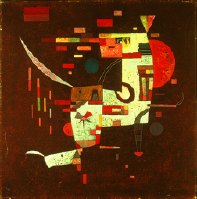 Kandinsky—Watercolours
and other works on paper: An exhibition at the
Royal Academy, London until July 4 Kandinsky—Watercolours
and other works on paper: An exhibition at the
Royal Academy, London until July 4
Vassily
Kandinsky (1866-1944) stands as one of the
dominant figures of twentieth century art. A
pioneer of abstract painting, who systematically
attempted to convey emotion and feeling outside
of direct representation, he was hailed by the
leading Surrealist André Breton as having led
(with Picasso) the insurrection against imitation
in art.
Alongside
his better known oils, Kandinsky produced
watercolours, gouaches and prints throughout his
life. It is this body of work that has been
assembled at the Royal Academy and it offers a
chance to view Kandinsky's artistic development
over the course of his life.
http://www.wsws.org/articles/1999/may1999/kand-m14.shtml
Wassily Kandinsky: Aktuelle Edition
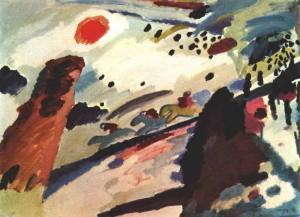 Kandinsky
und der Weg der Farbe Kandinsky
und der Weg der Farbe
von
Alexander Schaumann
Dieser
Beitrag thematisiert Kandinskys Ringen mit der `Schwelle´
in der Malerei. An Beispielen wie “Murnau mit Kirche”,
“Kleine Freuden”, “Romantische Landschaft”,
“Komposition V” u. a. wird versucht, Bezüge zur
inneren Welt Kandinskys und zur Biographieentwicklung
herzustellen.
Wo
bleibt das Geistige in der Kunst?
von
Christian Gelléri
In
Anlehnung an Kandinskys "Über das Geistige in der
Kunst" wird das Spannungsverhältnis zwischen Kunst
als Selbstzweck (l‘art pour l’art) und Kunst als
Lichtbringer (l’art pour l’âme) diskutiert.
Farb-Form-Theorien
Kandinskys:
von
Clemens Gresser
Synästhesie,
Gebrauch und Bedeutung des Blaus anhand zweier Bilder
An
den Quellen der Kunst - Paul Klee und Wassily Kandinsky
von
Wolfgang-Michael Auer
Sinneswelt
und Seelenwelt bilden die zwei Quellen künstlerischen
Schaffens. Anhand der Bilder 'Komposition 7' und 'Inneres
Kochen' von Kandinsky und 'Blumenmythos' von Paul Klee u.
a. werden diese Wege veranschaulicht.
Gedicht
zum Blauen Reiter
von Christian
Gelleri
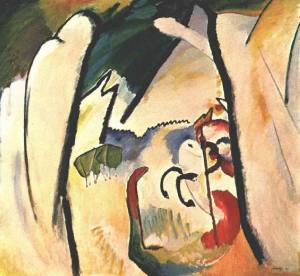 Figurinenkabinett Figurinenkabinett
Rüdiger Appel
12 Motive zum
Betrachten und Spielen
http://www.blauereiter.de/
Synesthesia: Do you see what they see?
Brad Lernley
Synesthesia--from the Greek syn, for
together, and aisthesis, to perceive--generated a
wave of scientific and popular interest around
the turn of the twentieth century. Russian
composer Alexander Scriabin, himself a
synesthete, featured an organ that produced
multihued light beams in his symphony Prometheus,
the Poem of Fire. To many fin de siecle
Romantics, synesthetes appeared to be humanity's
spiritual vanguard, closer to God than the
sense-segregated masses. "Such highly
sensitive people," wrote Wassily Kandinsky,
the Russian abstract artist, "are like good,
much-played violins, which vibrate in all their
parts and fibers at every touch of the bow."
http://www.britannica.com/bcom/magazine/article/0,5744,313956,00.html
|



